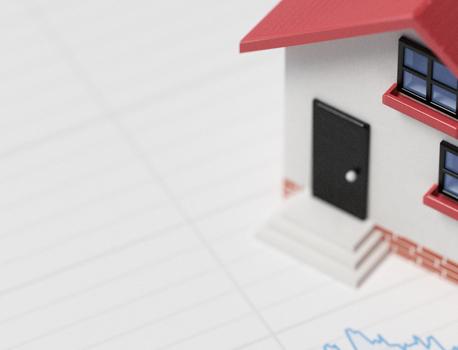At the start of a new year, it is not unusual for most to ponder on their goals for the year. Some even consider this as their new resolution. Absolutely, nothing wrong with doing so. We can also apply the same concept to our homes. In this 2-part series, I have curated the top-10 inspirational home management goals that Time magazine, USA.gov, and other sources have recommended that every homeowner should consider this year. Be sure to review and take steps today on some, if not all of these tasks.
Welcome to your home improvement’s New Year’s Resolution.
Part 1
1. Lose weight (shrink the bills)
Your house is a glutton, gobbling energy like a starved elephant. Gain control by trimming energy use.
- Remember your parent’s advice when you were growing up – switch off the lights when you leave a room. No lights left behind!
- Turn off your air conditioner when you leave the house and dial your heater down to 55 degrees at night. Consider getting a smart thermostat like Next to automatically do this for you.
- Install LED bulbs to save tons on your light bills. This should be pretty standard these days. Visit your local home improvement store to grab a few.
- Install low-flow showerheads to save on your water bills. You will be glad you did when the next bill comes through.
- Turn off your power strips and/or set your home computer to revert to sleep mode when not in use. You’d be surprised to know how much energy electronic gadgets consume even when they are plugged and not in use.
- Check your HVAC ductwork. Ducts are notorious energy-wasters, leaking your heating and cooling air through holes and loose connections.
- Clean out the dryer vent duct. In addition to safety concerns, it actually takes much longer to dry clothes when the vent is clogged up with lint.
- Make your home smart. There are various smart technology devices in the market to automate most appliances today and save on energy usage in your home.
- Depending on your electricity plan, use your washer and dryer during off-peak hours only
2. Quit smoking (purify indoor air)
The Environmental Protection Agency (EPA) lists indoor air quality as one of the top environmental health hazards due to the high percentage of contaminants, such as dust, mold spores, pollen, and viruses. The problem is at its worst during winter when windows and doors are shut tight.
You can help eliminate harmful lung irritants in your home with these maintenance and improvement tips:
- At the minimum, replace furnace filters monthly during peak heating and cooling seasons.
- Use zero or low-VOC (volatile organic compounds) paints if and when you decide on your next DIY painting project in your home. The chemical composition evaporates better even in indoor air conditions to keep you and your family safe.
- Use localized ventilation (vent-hood) in kitchens and bathrooms to remove cooking fumes, smoke, and excess humidity. Make sure ventilation systems exhaust air to the outside of your home, rather than your attic crawl space or between ceiling joists.
- In fireplaces and wood stoves, burn real firewood rather than pressed wood products that may contain formaldehyde.
- Use a portable air cleaner to help cleanse the air in single rooms. Portable air cleaner types include mechanical air filters, electrostatic precipitators, ion generators, and ultraviolet lamps.
There is hardly a catch-all solution for addressing pollutant problems in the home. So be sure to ask your local home improvement professional what options are available. Be wary of air cleaners that generate ozone — a known lung irritant.
3. Get out of debt (budget for improvements)
Creating a yearly budget for home improvement and maintenance helps prevent overspending and encourages you to put aside money for major replacements — such as new roofing or a kitchen appliance — that come up every few years.
Averagely, the costs of yearly maintenance and upkeep of a home is between 1% to 3% of your home’s initial price. That means the owner of a $300,000 home should budget between $3,000 to $10,000 each year for upkeep and replacements.
Have extra at the end of the year? Save it for more costly upkeep and replacement items down the road — you’ll probably need it then.
And remember not every dollar you spent improving your home will yield the maximum returns when you decide to sell, so be prudent and focus on the essentials.
4. Learn something new (educate yourself on home finances)
You do not need a college degree to be financially literate. Do you have access to an Internet-connected device such as a personal computer, smartphone, or tablet device? Heard of Google and YouTube lately? Yes, you can learn a lot from the comfort of your home and get educated on home finances, and ensuring your home is well maintained through occasional home improvements and fixes. It is true that not everyone isn’t handy, but here are some recommended checklist on getting financially educated. How to:
- Improve and maintain your credit scores to increase your creditworthiness.
- Reduce credit card debt to avoid putting an avoidable dent in your credit history and credit scores.
- Improve your insurance creditworthiness which can help keep your home insurance premiums from getting out of hand.
- Stay on top of loan payments. Avoid missing payment deadlines; if you do, notify your lender that your payment is forthcoming. Delinquent payments signal creditors that you can’t manage your money — resulting in lower credit scores.
- Budget for monthly maintenance and repairs. Know basic home maintenance skills. Bobvila.com has a list of 45 things every homeowner should know how to do.
5. Get organized (de-clutter)
One of the best and least expensive ways to feel better about your home is to clear it of clutter.
- Purge cabinets, drawers, closets, etc. of old items you’ve collected over the years in order to make rooms for new stuff.
- Go from room-by-room periodically clearing anything that you don’t use, wear or love and donate it to charity
- Fill your home with the things that raise your energy level and make you feel good, and get rid of the things that drain your energy or are broken
- Need more storage space? You’ve probably got storage solutions you didn’t know you had.
o Put up a high shelf between the walls of a narrow hallway, and tuck storage in out-of-the-way nooks, such as under-stairs spaces and between wall studs.
o Be creative at repurposing products to suit your need e.g., Shoe organizers do more than hold shoes — use them to store keys, notepads, and cell phones. Have a cabinetmaker install drawers in the toe kicks of your kitchen cabinets for napkins, cookie sheets, and appliance manuals.
Check out part 2 for the concluding series.





